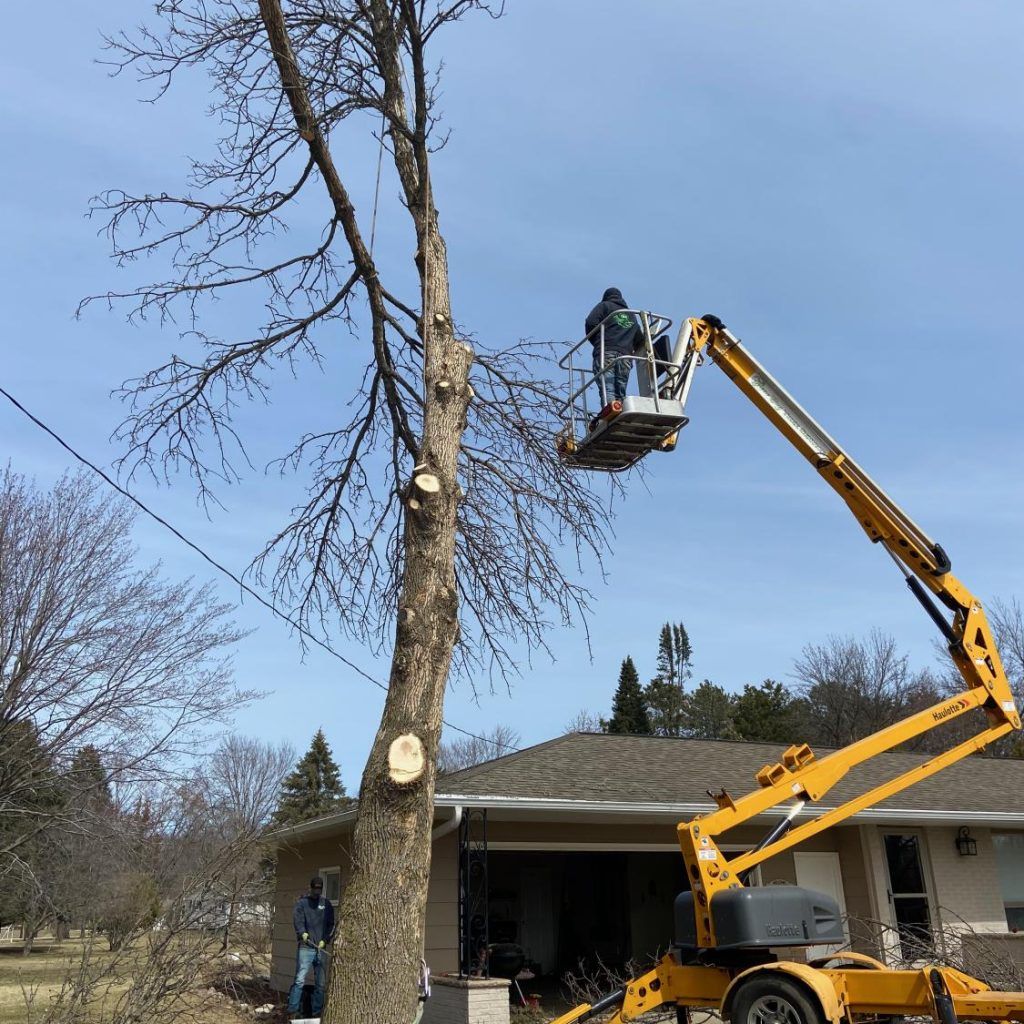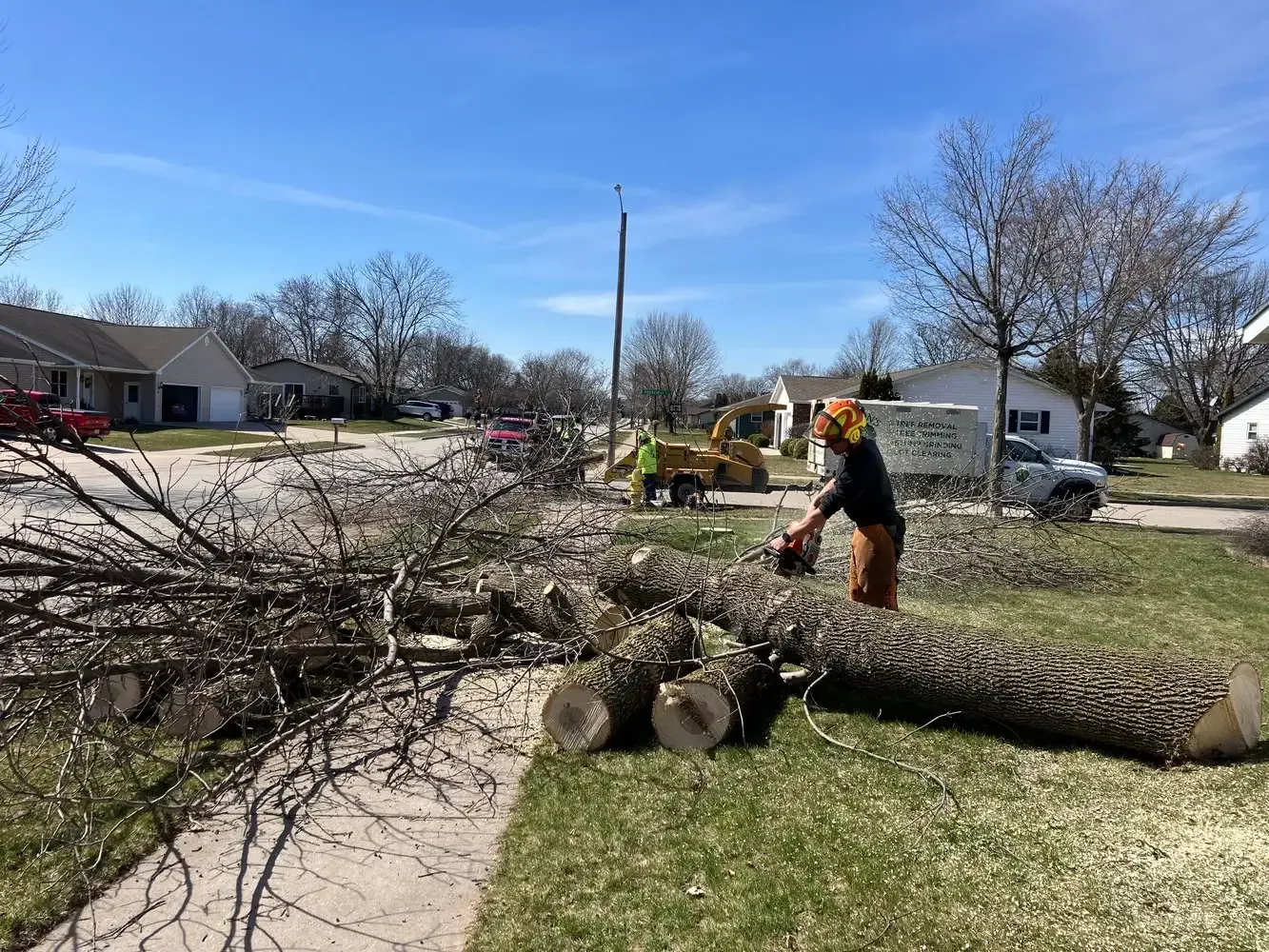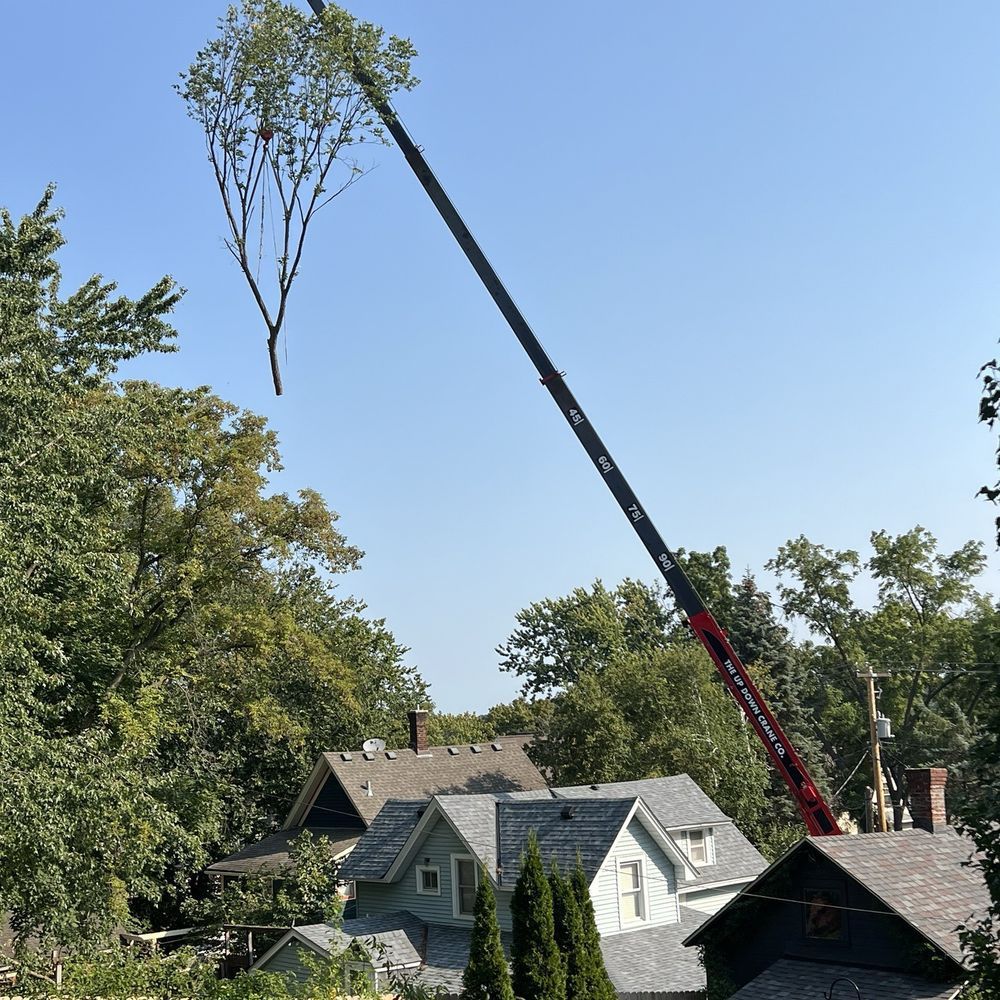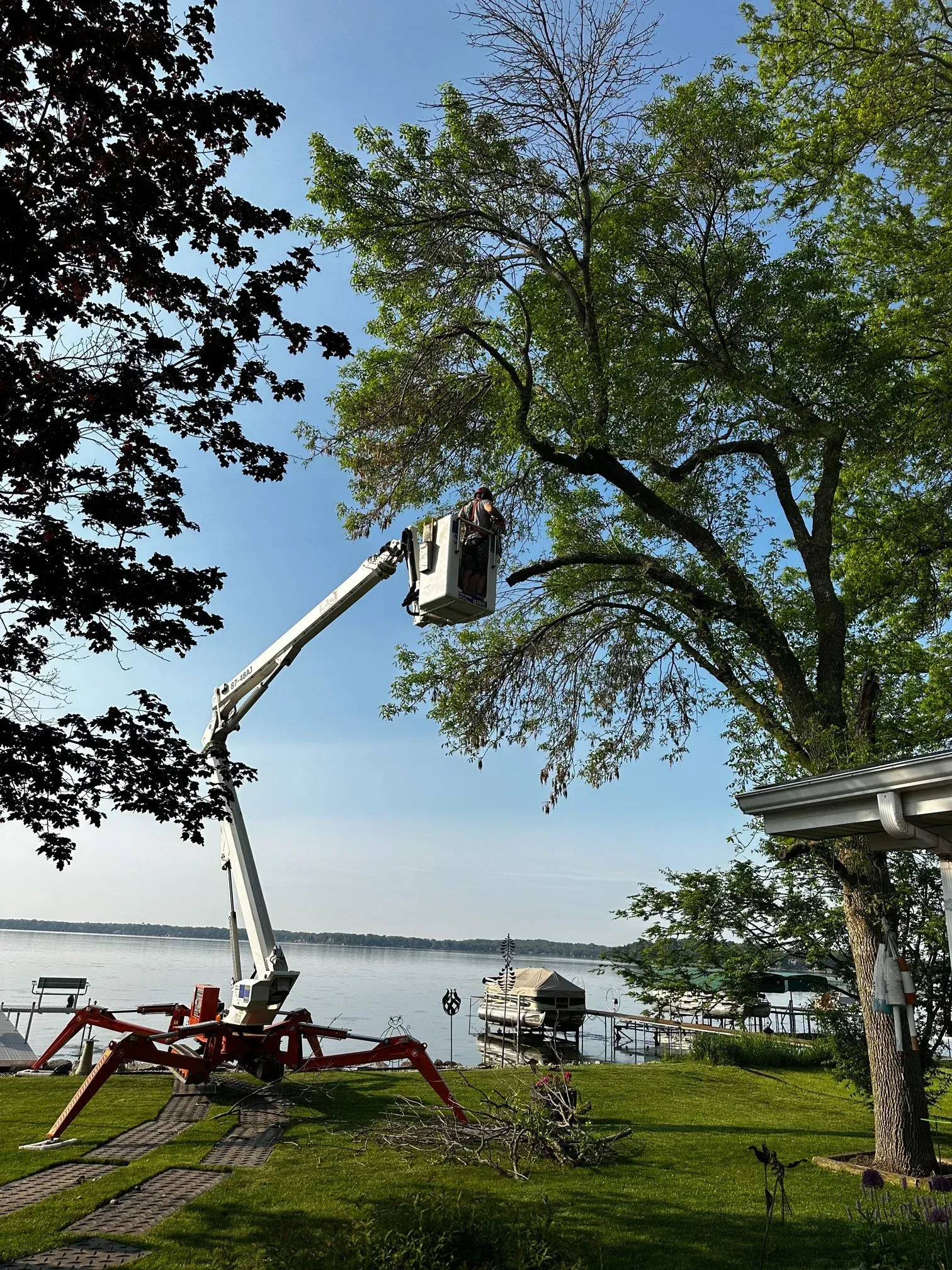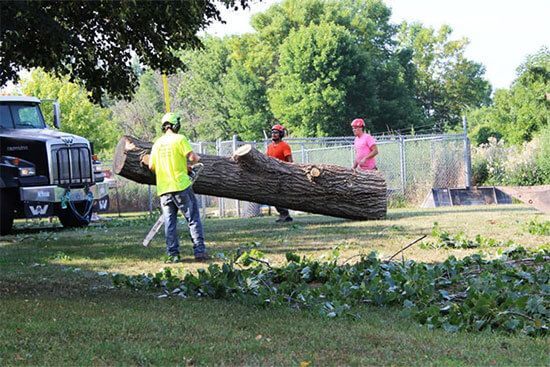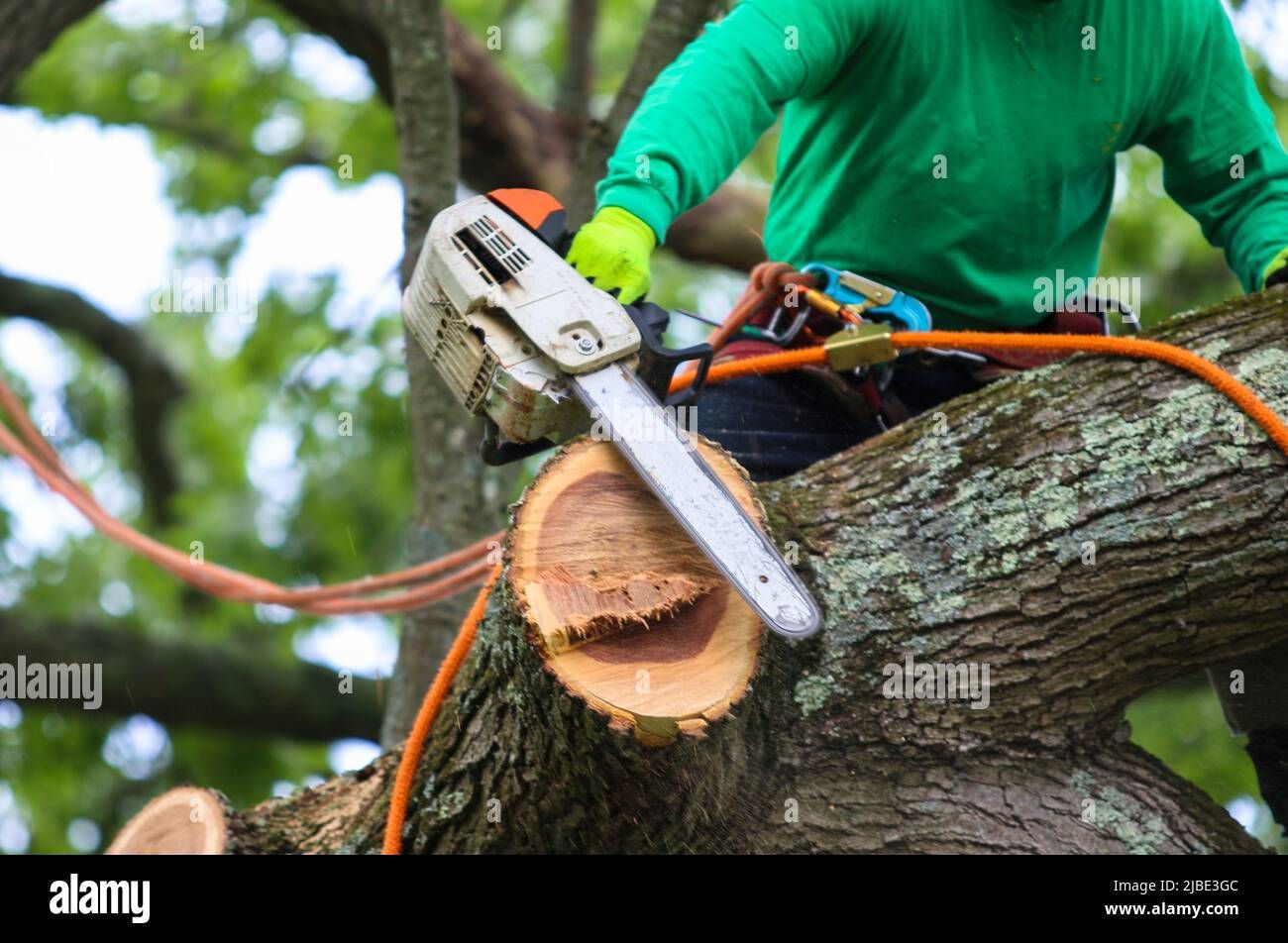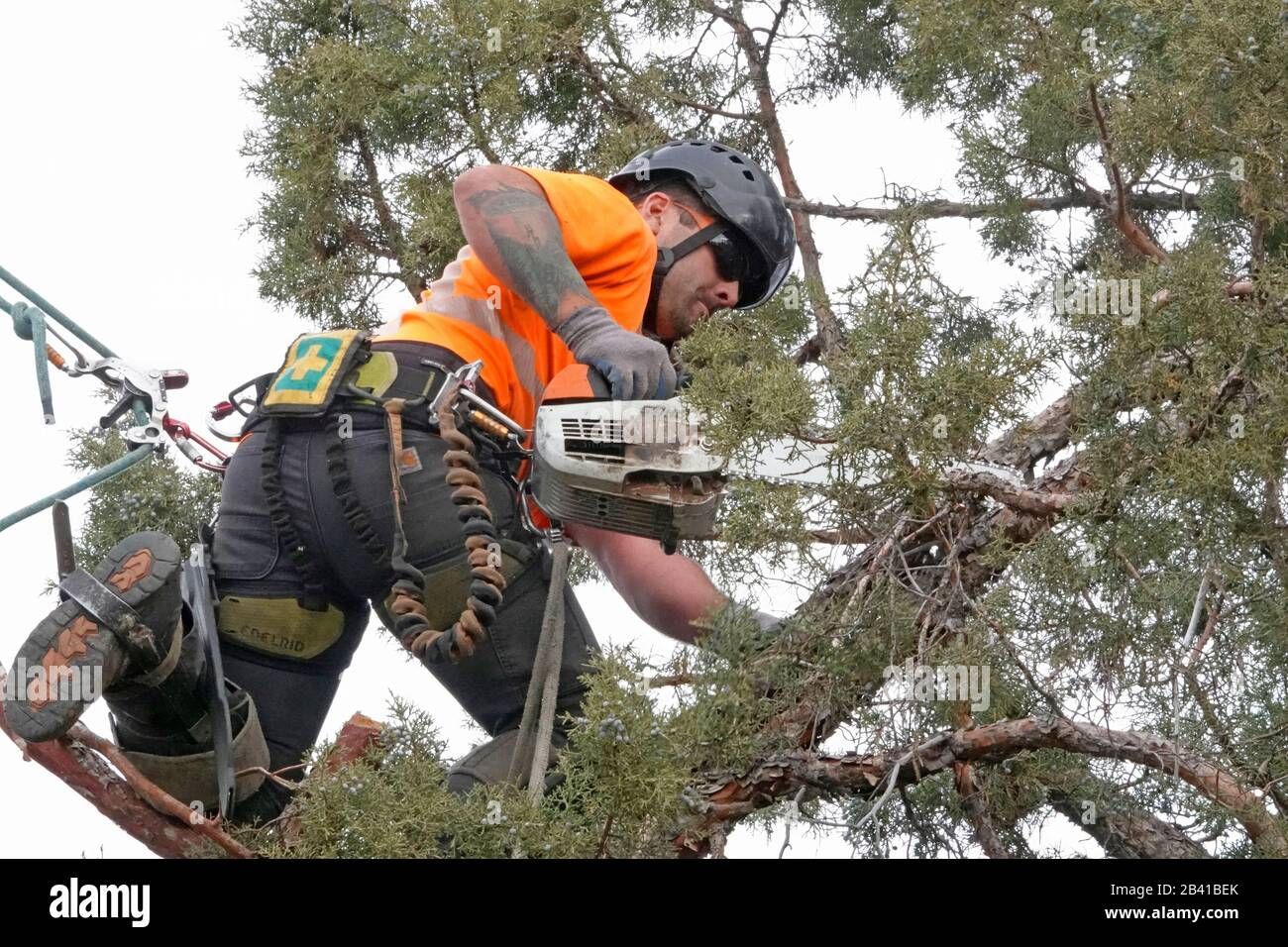How to Spot an Unstable Tree on Your Property
Trees provide beauty, shade, and value to your property—but when a tree becomes unstable, it transforms from an asset into a serious safety hazard. Eastern Iowa’s frequent storms, variable soil conditions, and seasonal temperature shifts can all contribute to tree instability. Knowing the warning signs can help prevent accidents, property damage, or worse. In this blog, Frank’s Tree Service shares how to recognize an unstable tree and what steps you should take to address it.
Why Tree Stability Matters
1. Safety for People and Property
Unstable trees are at risk of falling during storms or high winds, posing dangers to people, homes, vehicles, and power lines.
2. Legal Liability
Property owners may be held responsible for damage caused by a tree if it was known to be hazardous and not addressed.
3. Cost Savings
Early identification and treatment can reduce the need for emergency tree removal and extensive property repairs.
Visible Signs of an Unstable Tree
4. Leaning Trunk
A slight natural lean may be fine, but a recent or increasing lean is a strong indicator of instability—especially if the soil around the base appears disturbed.
5. Cracks or Splits in the Trunk
Vertical or horizontal cracks, splits, or seams in the bark can indicate internal decay or structural weakness.
6. Dead or Hanging Branches
Dead limbs are often brittle and break easily in wind. If they’re located above structures, they present an immediate danger.
7. Hollow Trunk or Cavities
Large hollow areas reduce the trunk’s ability to support the tree. If a third or more of the trunk is hollow, the tree could be at risk of failure.
8. Fungus or Mushrooms at the Base
Fungal growth on the trunk or roots may signal internal decay or root rot, weakening the tree’s foundation.
Root and Soil Warning Signs
9. Uplifted Soil or Exposed Roots
If the soil around the base of the tree looks cracked or raised, the root system may be failing. Exposed roots can also lose their grip and lead to tipping.
10. Heaving or Sinking Ground
Movement in the soil around the tree can indicate shifts in the root ball, especially after heavy rainfall or strong winds.
11. Nearby Construction Damage
Root systems can be compromised during construction or trenching, leading to gradual instability.
Canopy and Leaf Health Clues
12. Sparse Leaf Coverage
If parts of the canopy are thinning or bare during peak growing seasons, the tree may be in distress.
13. Discolored or Wilting Leaves
Unusual leaf color, early drop, or wilting can signal disease, pest infestation, or water stress—all of which contribute to weakening the tree.
14. Unusual Branch Angles or Weight Distribution
Branches growing at awkward angles or carrying too much weight may compromise overall stability.
Situational Factors That Increase Risk
15. Storm Damage History
Trees that have lost limbs or been damaged in past storms are more prone to failure in future events.
16. Species Susceptibility
Some trees, like silver maples and Bradford pears, are more prone to breakage and instability.
17. Poor Planting Location
Trees too close to buildings, driveways, or other trees often have restricted root systems, which can affect their structural integrity.
What to Do If You Spot the Signs
18. Schedule a Professional Assessment
Frank’s Tree Service offers tree risk evaluations in Cedar Rapids and Iowa City. Our certified arborists can determine if a tree poses a safety risk.
19. Prune or Reinforce When Possible
In some cases, unstable trees can be saved through strategic pruning, cabling, or bracing.
20. Remove the Tree If Necessary
When a tree is beyond saving, prompt removal is the safest option. We handle removals efficiently, safely, and with full cleanup.
Prevention Is Key
21. Annual Tree Inspections
A yearly checkup by professionals helps detect early warning signs and prevents larger issues from developing.
22. Proper Tree Planting
Selecting the right species and planting in appropriate locations ensures long-term stability.
23. Soil and Water Management
Healthy trees start from the ground up. Proper watering, aeration, and mulching contribute to a stable root system.
Why Trust Frank’s Tree Service
24. Local Experience
We understand the unique environmental factors affecting trees in Cedar Rapids, Iowa City, and surrounding areas.
25. Certified & Insured Arborists
Our team is trained to identify risks, make informed recommendations, and execute safe, effective solutions.
26. Full-Service Tree Care
From diagnostics to pruning, storm preparation, and emergency removals, we provide comprehensive support.
Conclusion
Spotting an unstable tree isn’t always easy, but ignoring the warning signs can lead to costly, dangerous consequences. Whether you’re worried about a leaning oak or a hollow maple, it’s always best to call in the experts. Frank’s Tree Service offers reliable, experienced tree assessments and solutions for every situation. Don’t wait until the next storm — take proactive steps to ensure your safety and protect your property today.
Contact Frank’s Tree Service Today
Phone: (319) 366-4747
Website:
www.frankstreeservice.net
Service Areas: Cedar Rapids, Iowa City, and nearby communities
FAQs
1. Can an unstable tree be saved?
Sometimes. Depending on the issue, treatments like pruning or cabling can help, but professional assessment is essential.
2. What’s the most common cause of tree instability?
Root problems due to poor soil, compaction, or disease are often the underlying issue.
3. Is emergency removal more expensive?
Yes. Proactive care is always more cost-effective than dealing with a fallen tree after a storm.
4. How can I tell if a tree is dead or just dormant?
Scratch the bark—if you don’t see green tissue underneath, it may be dead. Still, a professional inspection is the best way to know.

